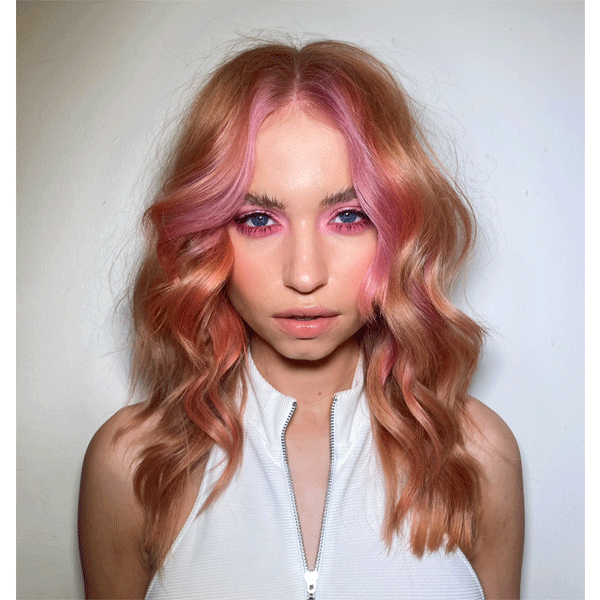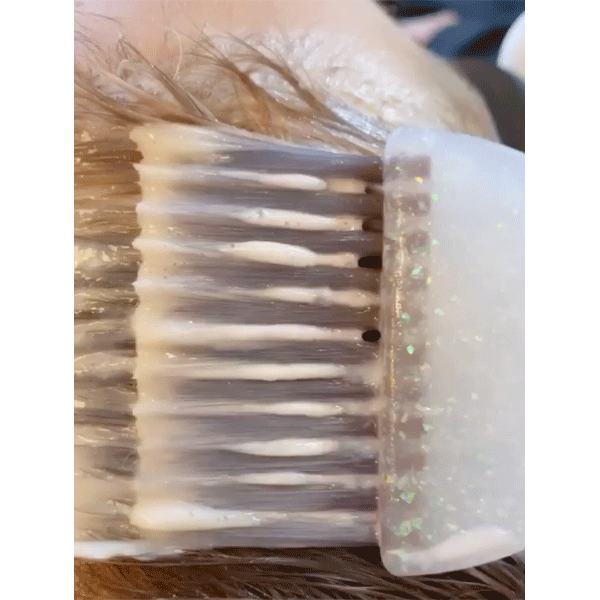3 Toning Tricks You Need To Try
Toning Education: 3 Tips For Seamless Blends
If your client is showing you soft, pastel tones for their color inspo, chances are they are coming from James Earnshaw’s (@jhair_stylist) Instagram. Known for his vibrant hues and dreamy blends, James shared his toning tricks for formulating, applying and blending to achieve the perfect pastel. Scroll down for his takeaway tips to start using ASAP and click here to become a BTC-U Member and receive unlimited access to James’s entire technique on BTC University!
What We Learned:
You can learn James’s full technique in his 90-minute course, but we’re teasing these tips you need to know now!
Tip #1: Achieve Seamless Blends With A Zigzag Parting
What’s the difference between soft blends and high-contrast looks? The partings! James shared his three go-to partings when applying toners.
Here’s a breakdown:
- Straight partings: Minimal blend, high contrast
- Soft wave parting: Medium blended result, even amount of blend and contrast
- Exaggerated zigzag parting: Maximum blend, very little contrast
Pro Tip: For his clients with natural starting Levels 8 or above, James will leave some of their natural hair out of the lightening process, creating a more dimensional finished result.
Tip #2: Try This Root Tap Trick For Easier Blending
Dragging the base color down too far can limit the remaining space for the mids-ends formula, which can cause an uneven blend. To avoid this, James recommends only tapping the root color on when applying.
“You can always drag the base color down afterwards if there is enough room left to blend the remaining formula,” James explains. “But don’t limit yourself by dragging it all down when first applying.”
Tip #3: Intermix Tonal Families When Formulating For Custom Blends
Don’t limit toner formulas to a single shade and clear. Instead, James formulates with multiple tones from the same color family to create vibrant, dimensional hues.
Here’s an example: If the client is requesting a soft blue, use a blue/black shade as the base and mix in an icy silver toner shade to create a richer tone with more depth.
Slide To See The Amazing Before & After!

Click The Beaker For A Full Formula Breakdown


Have Questions? James Has Answers!
One of the benefits of watching a course on BTC University? Artists are able to answer your questions in REAL TIME! Here are some technical questions viewers had for James during his livestream:
Question: What is the ideal level of lift for clients requesting pastel tones?
Answer: “It really depends on your desired result. I would definitely say you want to be a solid Level 8, 9, or 10. That is not to say that a Level 7 client can’t see a hue of color, it just depends on what kind of tone they’re requesting. Pink is so popular because it shows on any depth of hair, including Level 7. But if the client wants to see those light lilac tones, then they need to be lightened to at least a Level 9 or 10.”
Q: Do you prefer to apply toners on wet or dry hair?
A: “For me, it completely depends on my application. Toning on wet hair gives you a little bit more control when blending two colors. When toning on dry hair, you can achieve a bit more saturation, so you can be heavier with your placement.”
More from
James Earnshaw
-
Blonde
The Biggest Hair Color Trends of 2024
-
BTC Hair Trend Report
Bangs Are Trending: 70+ Fringe Inspiration Pictures
-
Red
Deep Cherry Hair Color
-
Balayage
Fall 2022’s Hottest Hair Color Trends
-
Balayage
The Biggest Hair Color Trends Of Winter 2021
-
Bobs
The 10 Biggest Haircut Trends Of Winter 2021
-
BTC University
Pre-Toning Tips For Perfecting Warm + Cool Pastels
-
Blonde
13 ’90s-Inspired Chunky Money Piece Formulas
-
BTC "On Tour"
BTC Hosts First Ever International Show: “On Tour” London
-
BTC Events
BTC “On Tour” London
-
BTC "On Tour"
“On Tour” London Cocktail Party
-
#thebtcshow 2019
#THEBTCSHOW 2019: DAY 3
-
#thebtcshow 2019
AMIKA AT #THEBTCSHOW 2019









